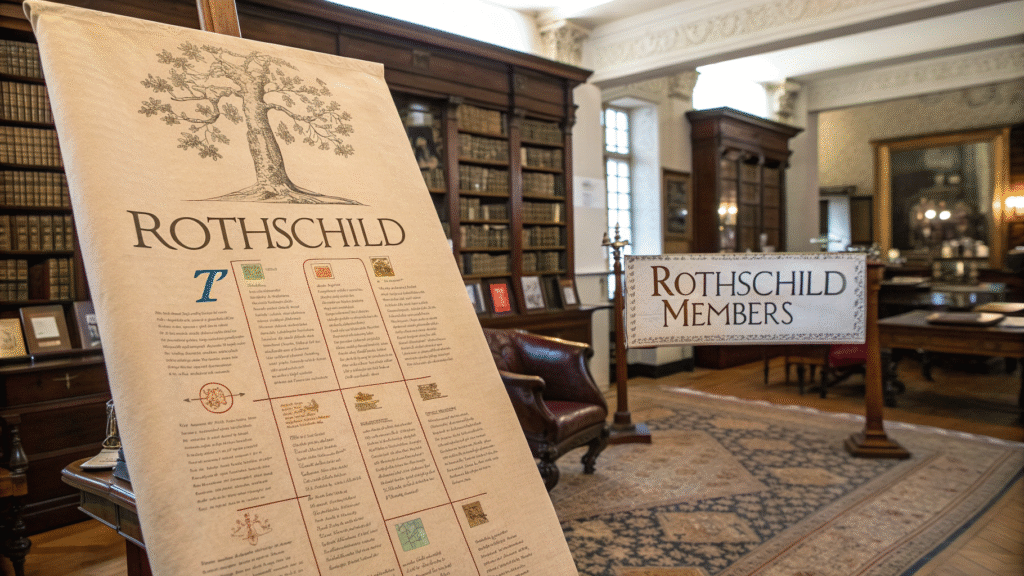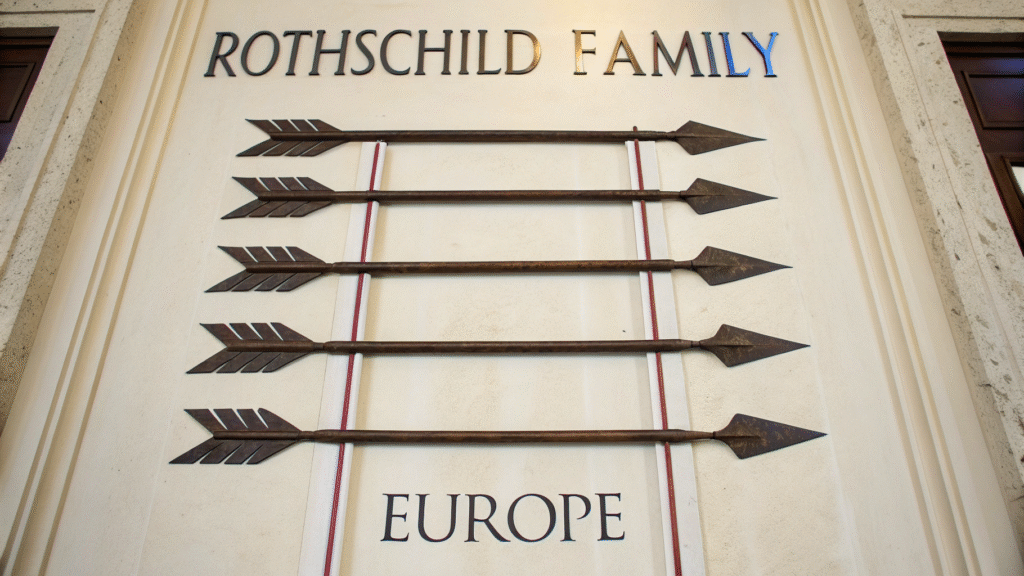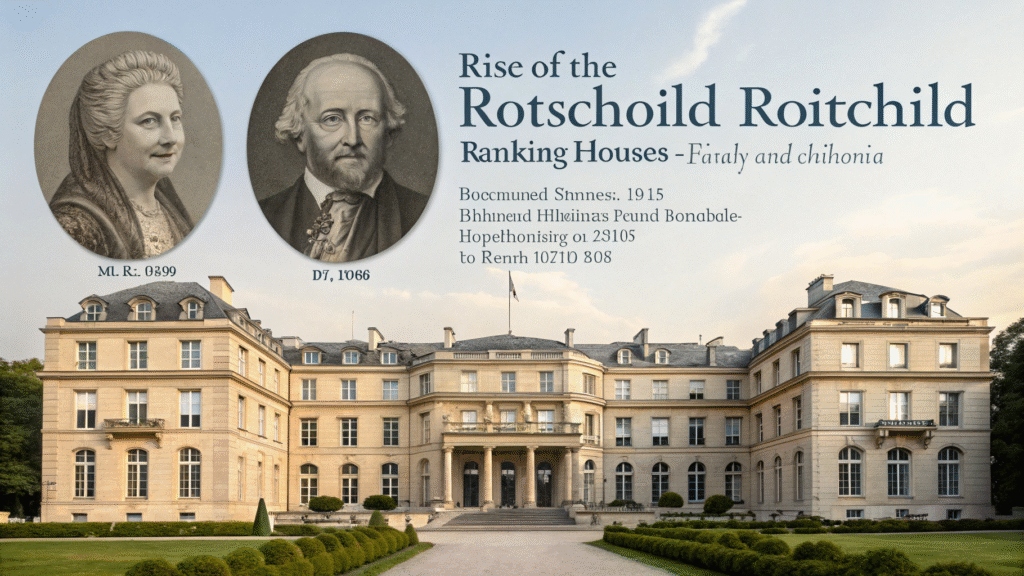Introduction: Unraveling the Rothschild Family Tree
The Rothschild family tree is one of the most fascinating genealogical structures in modern history.The Rothschilds are known to be one of the richest and most influential banking families in the world, which is why they have long become an object of both fascination and speculations about their power.But who were they really? Where did they come from? And how did a single Jewish family from Frankfurt become a global financial powerhouse?
In this detailed article, we break down the The Rothschild family tree, from its roots in 18th-century Germany to its branches that span across Europe and beyond. Whether you’re researching history, finance, or genealogy, understanding the family tree offers insights into much more than money—it tells the story of strategic legacy-building, resilience, and cultural impact.

The Origins of the 7Rothschild Family Tree
The Rothschild family tree begins in Frankfurt, Germany, with Mayer Amschel Rothschild (1744–1812), widely regarded as the founder of the Rothschild banking dynasty. He was born in the Jewish ghetto (Judengasse) and began his career as a coin dealer and banker.7Rothschild Family Tree
Key Facts About Mayer Amschel Rothschild:
- Born into a modest family
- Gained trust with German nobility, especially Prince Wilhelm of Hesse
- Established M. A. Rothschild & Sons
- Had five sons, whom he sent across Europe to establish banking houses
This early strategy laid the foundation for the international banking network that became synonymous with the Rothschild name. 7Rothschild Family Tree

The Five Arrows: 7Rothschild Sons and Their European Branches
Mayer Amschel Rothschild’s five sons are central to the Rothschild family tree. Known collectively as the “Five Arrows,” each was sent to a major European city to create a Rothschild financial stronghold.
| Son | Location | Role |
|---|---|---|
| Amschel Mayer Rothschild (1773–1855) | Frankfurt | Managed the German branch |
| Salomon Mayer Rothschild (1774–1855) | Vienna | Founded the Austrian branch |
| Nathan Mayer Rothschild (1777–1836) | London | Established N.M. Rothschild & Sons |
| Carl Mayer Rothschild (1788–1855) | Naples | Managed the Italian operations |
| James Mayer de Rothschild (1792–1868) | Paris | Founded the French Rothschild bank |
Together, these five brothers created an unparalleled financial network that could transfer capital faster than any monarch or military of their time. 7Rothschild Family Tree

The Rise of Rothschild Banking Houses
Each of the five branches of the 7Rothschild family tree operated semi-independently, but they worked closely to finance governments, fund infrastructure projects, and influence economic trends7Rothschild Family Tree.
Highlights of Rothschild Financial Influence:
- Funded the British war effort against Napoleon
- Played a role in the construction of railways across Europe
- Lent out money to Vatican, monarchies and even the Suez Canal project
- Became financiers of the post-Napoleonic restoration of Europe
This made the Rothschild family not only incredibly wealthy but also key political influencers.
Expansion and Intermarriage: Preserving the Rothschild Legacy
The7Rothschild family tree remained tightly controlled, with many marriages occurring within the family to preserve wealth and power. This included cousin marriages, a common practice among aristocratic and financial dynasties at the time. 7Rothschild Family Tree
Notable Rothschild Marriages:
- James Mayer de Rothschild married his niece, Betty
- Intermarriages tied the houses in London, Paris and Frankfurt
- Women of the family were also influential, often managing estates or guiding philanthropy
Their careful family planning and control over marriages ensured the longevity of their financial empire.
Modern-Day Rothschild Family Tree: Where Are They Now?
While the Rothschild family tree is no longer as centralized as it once was, its members remain influential in banking, wine, art, and philanthropy. Today, the family has diversified and modernized their investments, stepping into environmental finance, biotech, and global consultancyWhile the Rothschild family tree is no longer as centralized as it once was, its members remain influential in banking, wine, art, and philanthropy. Today, the family has diversified and modernized their investments, stepping into environmental finance, biotech, and global consultancy. 7Rothschild Family Tree
Prominent Modern Rothschilds:
- Evelyn de Rothschild (1931–2022): Former head of Rothschild & Co., knighted in the UK
- David René de Rothschild: Key figure in modern banking reforms and global finance
- Nathaniel Rothschild: Entrepreneur and financier, involved in energy and mining
- Ariane de Rothschild: CEO of Edmond de Rothschild Group, active in social impact investing
Although the family no longer wields absolute control over global finance, their legacy institutions remain cornerstones of European banking. 7Rothschild Family Tree
The 7Rothschild Family Tree by Region
1. German Branch (Frankfurt)
- Founded by Amschel Mayer Rothschild
- Declined after the fall of the Holy Roman Empire
- Today, largely absorbed by other branches
2. British Branch (London)
- Founded by Nathan Mayer Rothschild
- Financed wars, government bonds, and infrastructure
- N.M. Rothschild & Sons still operates under Rothschild & Co.
3. French Branch (Paris)
- Founded by James Mayer de Rothschild
- Engaged in mining, railways, and wine (Château Lafite)
- Rothschild banking merged with British operations in 2003
4. Austrian Branch (Vienna)
- Founded by Salomon Mayer Rothschild
- Lost influence after WWI and WWII
- Many properties confiscated during Nazi occupation
5. Italian Branch (Naples)
- Founded by Carl Mayer Rothschild
- Branch dissolved in the 19th century due to political changes in Italy
7Rothschild Family Tree in Culture and Myth
The Rothschild family tree has often been the subject of conspiracy theories, many rooted in antisemitism and misinformation. While the family has held considerable financial influence, many claims exaggerate or fabricate their control over global events. 7Rothschild Family Tree
Common Myths (Debunked):
- They control all central banks — False
- They own all the world’s wealth — False
- They orchestrate wars — False
In reality, the Rothschild family has diversified interests and operates under modern corporate regulations like any other financial group.
Why the Rothschild Family Tree Still Matters
Understanding the Rothschild family tree isn’t just about tracing wealth—it’s about understanding how banking, politics, and family strategy intersect. The Rothschilds were early adopters of international finance, and their structure is still studied in business schools and political history courses worldwide.
Their story is one of:
- Strategic geographic expansion
- Intergenerational wealth management
- Influence without dictatorship
- Navigating change through revolution, war, and reform
Lesson inat the Rothschild family Tree
For researchers, historians, and financial experts, the Rothschild family tree provides valuable lessons:
- Succession planning in family businesses
- Networking across borders
- Managing reputation in a public-facing dynasty
- Adaptation through centuries of change
This makes it a rich area for case studies, documentaries, and academic exploration.

